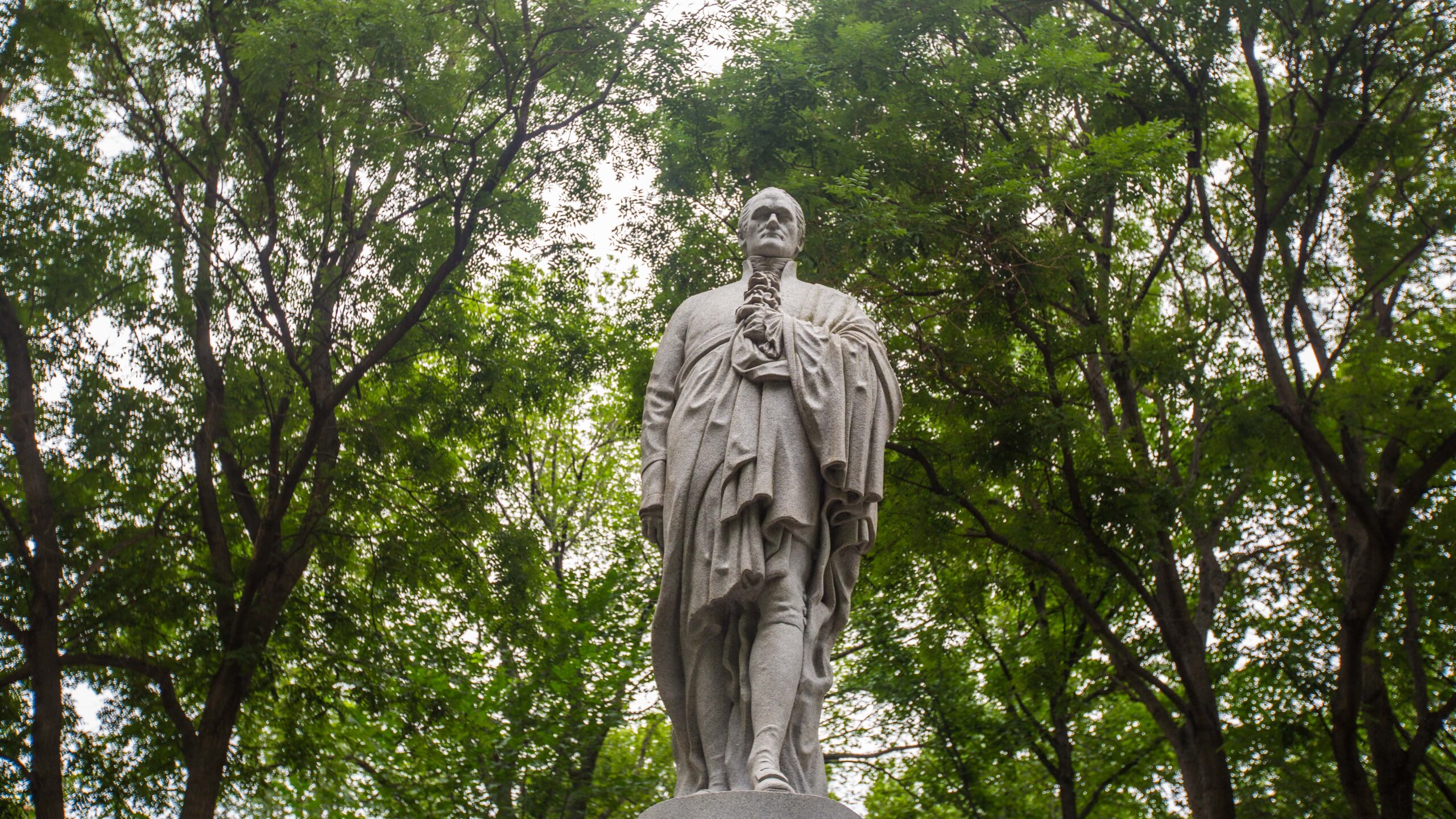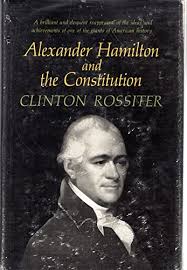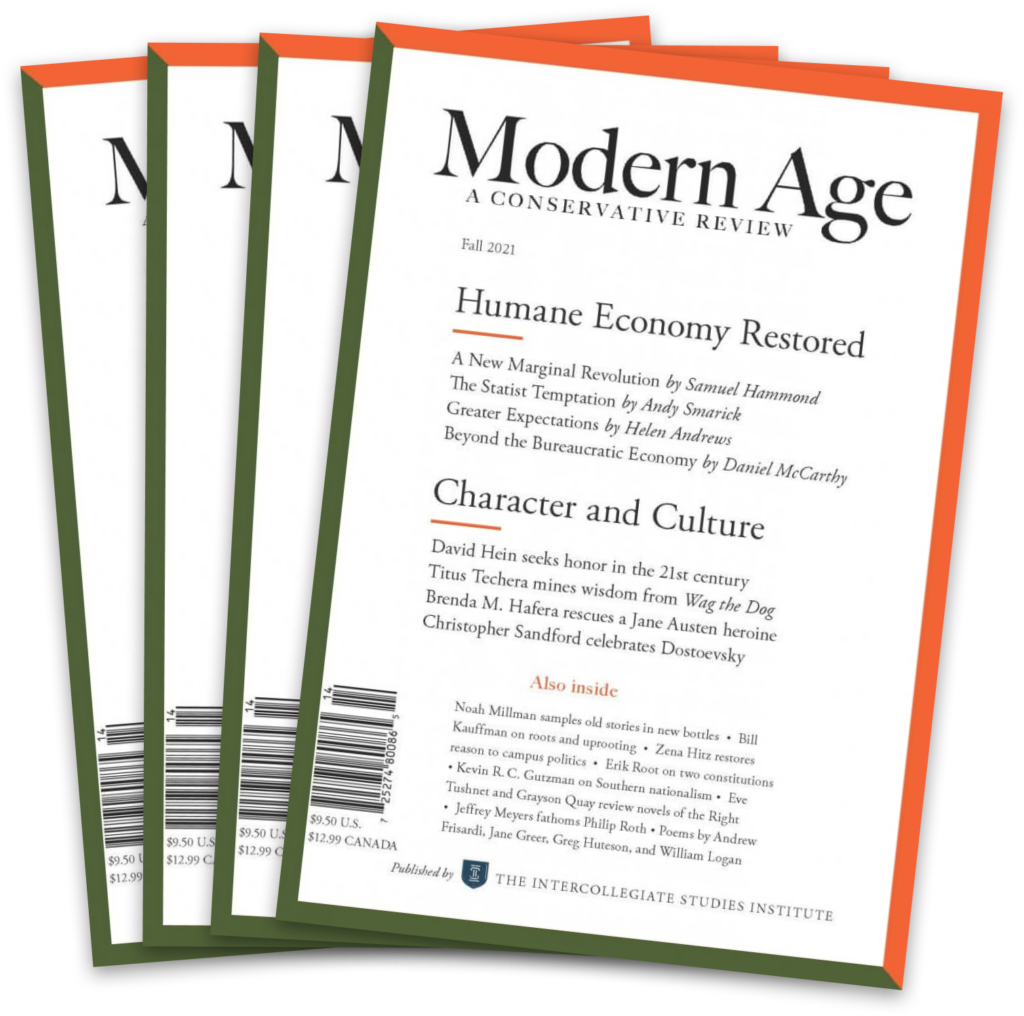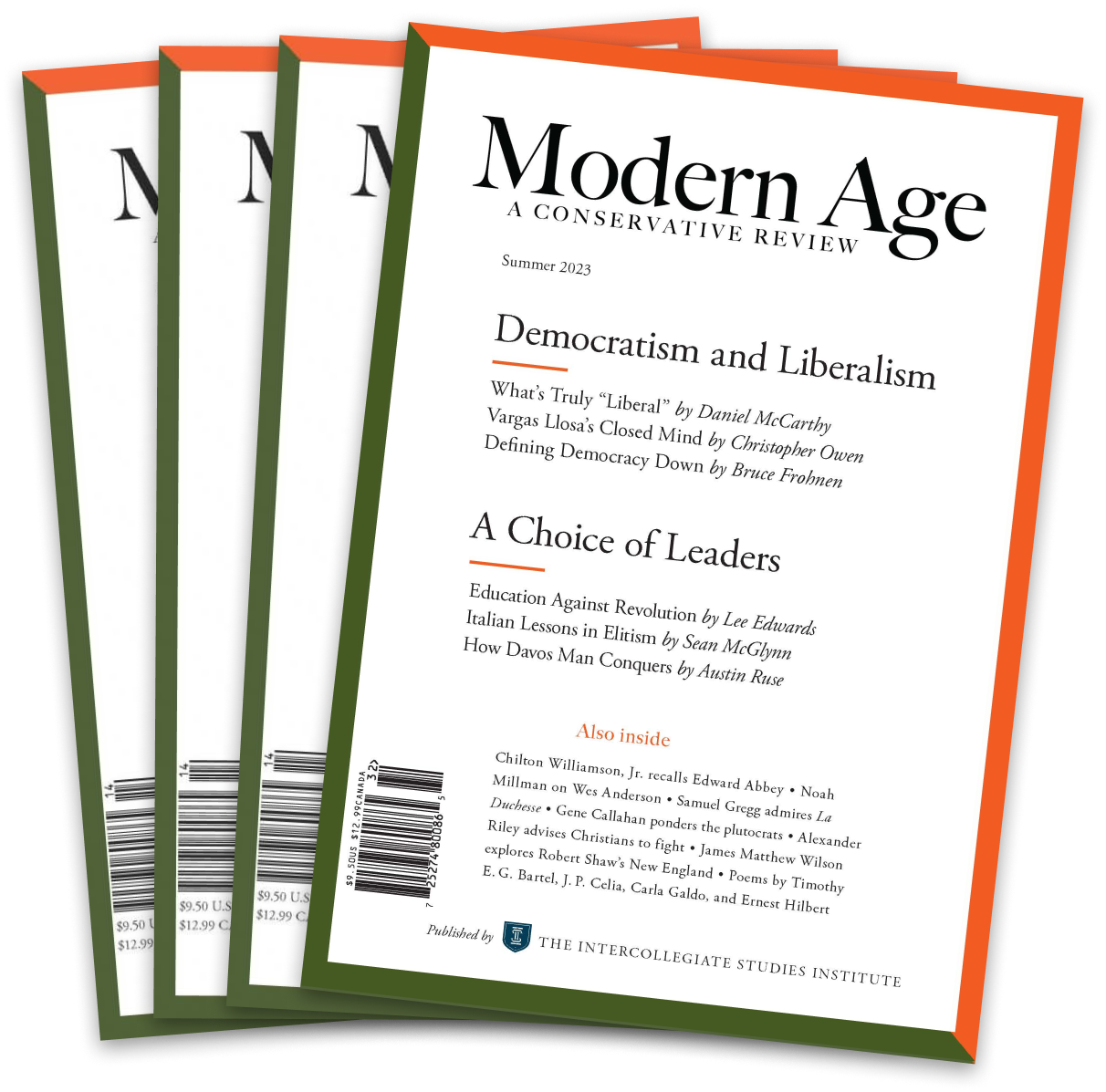Because of the subject matter, any careful study of Alexander Hamilton is certain to be interesting. When the inherent attraction is strengthened by extensive scholarship and vivified with literary skill the result will attract attention and stimulate argument. One may confidently predict both consequences in the case of Professor Rossiter’s current volume.
It is not another biography of Hamilton. Scarcely anything is said about his Caribbean background, nor about his tragic, premature death in the duel with Aaron Burr. The sordid affair with Mrs. Reynolds is barely mentioned, and details of his meteoric career are highly selective. But this is by intent. Professor Rossiter tells us that his purpose is “an exposition of the political philosophy that animated his [Hamilton’s] efforts to transform the Constitution into the charter of a republican empire.” That purpose is amply fulfilled, even though in the process more questions are raised than answered.
There is nothing novel in the thesis that Hamilton’s influence on our politics was for a long time greatly underestimated. At least since the bicentennial of his birth, in 1957, biographers and commentators have been emphasizing this deficiency. Over forty years ago, Arthur H. Vandenberg, later senator from Michigan, wrote a lengthy panegyric on the theme that “Alexander Hamilton was the master craftsman of American Government.” Hamilton’s able English biographer, F. S. Oliver, made the same analysis, more skillfully, as early as 1906.
For a similar period there has also been a parallel, though less successful, effort to picture Hamilton as the authentic progenitor of American conservatism. From this school of thought Professor Rossiter has heretofore been sharply dissociated. A decade ago, in his Conservatism in America, Rossiter said of Hamilton: “His basic ideas . . . were irrelevant in the American environment and were certainly not those of an American conservative. Unbalanced, unchecked, centralized authority was not the sort of government for which men like Washington had fought.”
What he considered irrelevant for Americans then, Professor Rossiter now finds highly relevant for Americans today. He admits a change of stance, saying that “somewhat unexpectedly” he has concluded that Hamilton’s “works and words have been more consequential than those of any other American in shaping the Constitution under which we live.” In the present volume the author finds that Hamilton had “many of the political and philosophical credentials of the conservative.” Again: “He is a source of inspiration and instruction to modern conservatives, but so is he, if they are not afraid to go to him, to modern liberals.”
If conservatism in this country stands for preservation of the federal republic, as launched in 1787, then Hamilton certainly cannot be called a conservative. This “great centralizer” had no sympathy whatsoever for theories of divided sovereignty. He wanted a permanent president, holding office “during good behaviour,” entrusted with an absolute veto over legislation, empowered to appoint state governors as his personal Gauleiters. The explicit draft Constitution presented by Hamilton at the Philadelphia Convention, and there largely ignored, is of itself sufficient evidence to prove that Hamilton sought to have all political power concentrated in the national government and more particularly in its executive branch. A Faubus or a Wallace would have had short shrift under a Hamiltonian system.
Of course this is not denied by Professor Rossiter, who characterizes Hamilton as “a strangely uneasy, unhelpful, silent witness” during the actual framing of the Constitution. His contribution was to come later, not merely in heroic and successful effort to have the Constitution ratified, imperfect though he thought it, but even more in his later activities as Secretary of the Treasury and confidant of President Washington. It was in giving a strongly nationalistic slant to the malleable Constitution, at the very outset, that Hamilton gained his most memorable triumph. Chapter and verse of his subtle development of the doctrine of “implied powers” are given by the author, including convincing speculation on the customarily unacknowledged influence of Hamilton on Chief Justice Marshall.
It is the well-supported contention of this book that Hamilton, more than any other single man, made possible the currently dominant “liberal” line of constitutional interpretation, even well in advance of the Fourteenth Amendment. Opinions of the Warren Court, for instance those on public school integration and congressional redistricting by judicial fiat, are cited as evidence that “we live today . . . under a Hamiltonian Constitution.” This “relevance of Hamilton” to the current political scene is the concern which Professor Rossiter wants his readers to share, down to the somewhat bold assertion that “To us today, as to him 170 years ago, the Constitution appears as a grant of splendid powers rather than a catalog of niggling limitations.‘‘
Characterization of one political theory as “splendid” and of its opposite as “niggling” is only a sample of the author’s constant editorialization. The practice is so frequent as to make one suspect it is no accident that this book appears when the unlimited benevolence of centralized government is a campaign issue. Since Hamilton was himself no democrat it would be helpful if those who admire him could be convinced that he would have approved Democracy as currently preached from the White House.
So there could be method in the special pleading which admits that Hamilton showed bias, but with the adjective “healthy.” As other illustrations, he was always “more concerned to act creatively than to delay timidly.” His view of the Constitution was “spacious” and his interpretation of it either “supple” or “permissive” or “latitudinarian.” Far otherwise his overadvertised contemporaries. Thus Madison is defined as “a fussy eclectic” alongside Professor Rossiter’s “dashing visionary.” As for poor Jefferson, his view of the Constitution was “narrow, rigid, almost suffocating” by contrast with that of the paragon who “meant it to be the obliging charter of a republican empire.”’
Some of this unilateral enthusiasm may be justified by the deep suspicion with which Americans, by and large, have always regarded Hamilton. His contempt for the common man, his arrogance, even his versatility and brilliance have blocked him off from hero-worshippers, as Professor Rossiter freely admits. But in putting Hamilton and Jefferson into opposing scales this writer weights them far more heavily for the former than did Claude G. Bowers for the latter in his classic study of forty years ago. The one under survey suggests that among the Founding Fathers only Hamilton had ear for, and kept step with, the distant drumbeat of Manifest Destiny.
That argument has implications of which Professor Rossiter seems wholly unaware, showing how quickly men forget the wreckage caused by magnetic leaders who are simultaneously energetic, able, and unscrupulous. One would have thought that the Fuehrer Prinzip had been finally discredited by Hitler, whose rise from obscurity was—let’s face it—even more dazzling and temporarily successful than that of Hamilton. No comparison is intended, but if the United States has become “a Hamiltonian rather than a Jeffersonian country” (as Professor Rossiter concludes) then it is time for American conservatives to look behind the allure of flapping flags. The taproot of their philosophy is faith in self-government. And that harmonizes ill with the belief that the public good should be determined by the peerless leader.
Professor Rossiter, seeking the source of Hamilton’s adulation of concentrated power, gives major credit to David Hume. But he also rightly sees a considerable debt to Rousseau, progenitor of the “general will” and hence of those modern theories of dictatorship, left or right, necessary first to define and then enforce a general will, once its existence in any organized society has been assumed. It is noteworthy that Hamilton on occasion used this ominous phrase, though “public good” was one that pleased him more. In any case his political thinking, though poles apart from that of Rousseau in many details, unquestionably leads towards the same institutional conclusion of strongly centralized and therefore potentially tyrannical government.
In a curious passage, Professor Rossiter emphasizes Hamilton’s conviction that political leadership should capitalize on the passions of men “in order to make them subservient to the public good.” This, says the author, is what two “Romantics” named Rousseau and Hamilton did with similarly vague and confusing shibboleths. And then: “There are those who argue that the first duty of the political scientist is to throw thinking men into studied confusion, and both Rousseau and Hamilton did this duty with a vengeance.”
With a “vengeance” is the mot juste. For the Reign of Terror was in large part the consequence of Rousseau’s ideas. And “the final victory of the New Deal,” which Professor Rossiter assumes, is by his interpretation largely due to Hamilton’s “dynamic view of the Constitution.”















